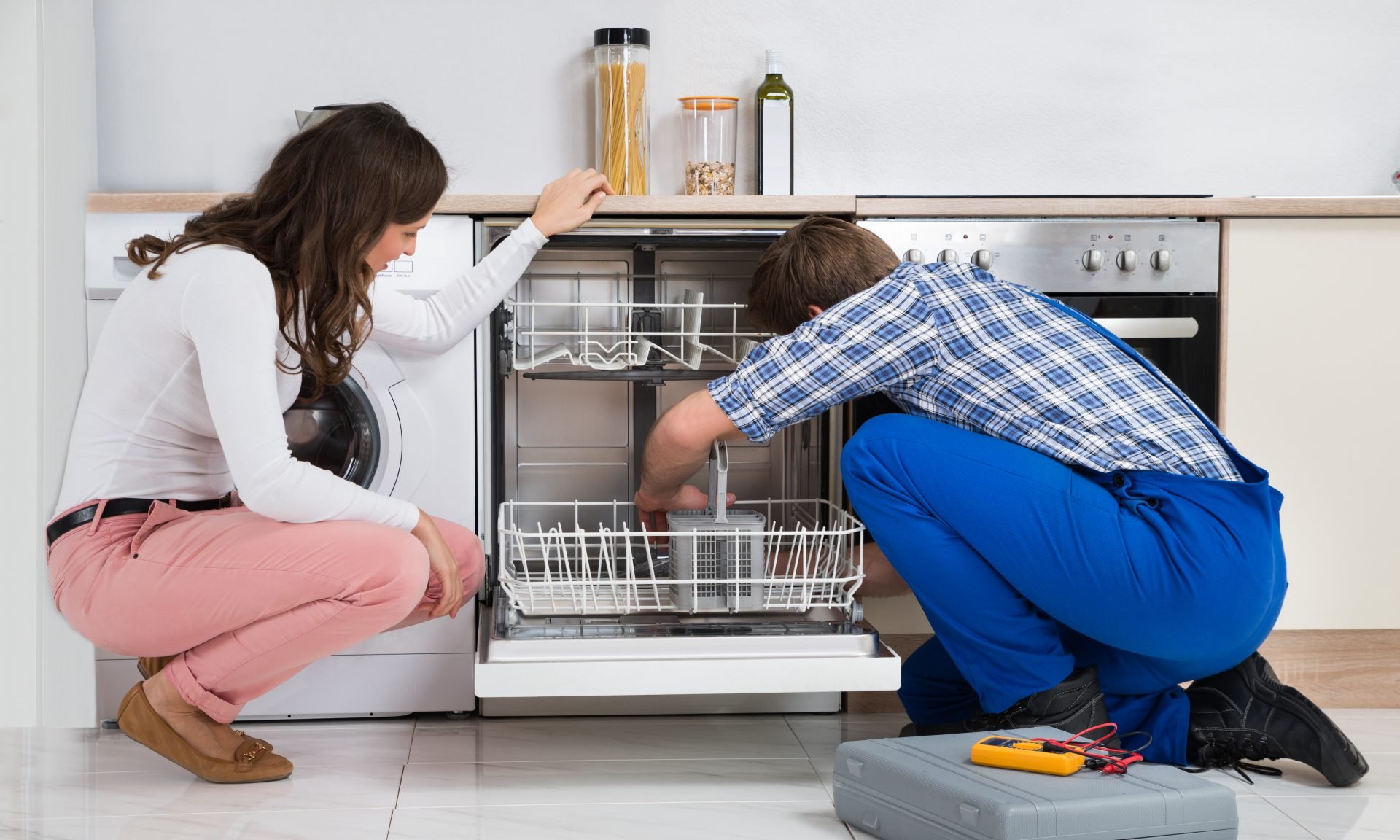What Does a Home Warranty Cover?
A home warranty helps pay to repair or replace major systems and appliances, but coverage varies by company.

Some or all of the mortgage lenders featured on our site are advertising partners of NerdWallet, but this does not influence our evaluations, lender star ratings or the order in which lenders are listed on the page. Our opinions are our own. Here is a list of our partners.
A home warranty plan is a service contract that pays for limited repairs to certain appliances and home systems. Most home warranties only cover "normal wear and tear," which is the expected deterioration that happens over time with everyday usage. Damages from other causes, such as natural disasters, accidental breakage or lack of maintenance, usually aren’t covered.
Many home warranty companies offer systems-only and appliance-only plans; some companies have comprehensive plans that cover both systems (such as heating, electrical and plumbing) and appliances (such as refrigerators, ovens and dishwashers).
Systems-only home warranty plans generally cover:
- Heating.
- Cooling.
- Electrical.
- Plumbing.
- Water heaters.
Appliance-only home warranty plans generally cover:
- Oven/range/stove/cooktop.
- Dishwasher.
- Washer and dryer.
- Built-in microwave.
- Garbage disposal.
- Garage door opener.
What is an add-on option?
Most home warranties allow you to buy additional coverage. A few examples of commonly available add-on items include special coverage for:
- Pools.
- Septic pumps.
- Well pumps.
- Limited roof leak repairs.
When is an appliance or system covered?
Whether a home warranty will repair an appliance or system depends on the company and your plan. Your home warranty contract, known as a service agreement, outlines what the company will and won’t pay for. The contract also lays out additional terms, such as when coverage begins.
Your service agreement lists exclusions — the specific appliances, systems and parts that the warranty doesn’t cover and in which situations the home warranty company might deny coverage. Review the exclusions carefully to understand what type of coverage you’re getting before purchasing a plan.
You’ll pay more than just your monthly or annual premium. Home warranties often come with a service fee — generally ranging from $75 to $100 — that you pay every time you file a claim. There are also coverage limits, which cap how much the company will pay to repair or replace a particular item. For example, if your oven fails and your policy has a $500 limit for repairs or replacement, you might pay a $100 service fee to file the claim and then pay out of pocket for any costs over that $500 limit.
Advertisement
What is not covered by a home warranty?
A home warranty doesn't cover everything that can go wrong with a covered item. Every provider's contract contains exceptions and exclusions to their coverage. For example, your plan's contract may cover plumbing stoppages — as long as they’re not caused by roots located outside of the home's structure.
Also, home warranties often don’t guarantee that you’ll get replacement parts or equipment of the same brand, color or size. So even though your appliances or systems might be repaired, you could end up having a mismatched kitchen or bathroom.
Here are some other things home warranties typically don't cover:
- Areas outside the main part of the house, such as underground pipes or sewer lines, unless you've specifically added them into your coverage.
- Homes larger than 5,000 square feet. You'll likely have to pay more for a larger home.
- Pre-existing conditions. This can include any negative items found during a home inspection or indicated in the seller's disclosure, as well as issues that you were unaware existed before a repair started.
- Septic systems, though you may be able to purchase coverage for an additional fee.
- Systems and appliances that you improperly maintained or someone improperly installed.
- Recalled items or those covered under another warranty.
- Property use as or in a commercial business, such as a bed-and-breakfast or day care.
- Coverage for more than one of the same appliance or system.
- Cosmetic damages, such as dents or scratches, and damages from pests.
Coverage varies depending on the provider, and you can check your contract to learn what specific situations are excluded from coverage.
Still under manufacturer’s warranty? If most of your appliances and systems are still covered by the manufacturers’ warranties, you might want to wait to get a home warranty. Plans generally don’t cover items until after a manufacturer warranty expires.
» LEARN MORE: Do you need a home warranty? How to decide
Is home warranty coverage the same as homeowners insurance?
No, a home warranty is not the same as homeowners insurance. A home warranty covers different items and in different circumstances than homeowners insurance. Where a home warranty helps repair the appliances and systems in your house due to routine wear and tear, homeowners insurance covers your physical house when damages occur from events like fires or theft. Your home warranty may cover a malfunctioning dishwasher, but for coverage of secondary damages — like a buckled floor after your faulty dishwasher leaks — you'd need to rely on homeowners insurance coverage.
Will a home warranty replace an item if it can’t repair it?
The good news is that, yes, a home warranty usually will pay to replace an appliance or system if a repair won’t fix a problem. But remember that there are caps and limits. Most home warranty contracts state that the amount paid for replacement can be less than what you’ll have to pay to purchase a new appliance or system.
For example, a new dishwasher that matches your current model might cost $1,000, but if your plan only pays up to $500, you’ll be left paying the remaining $500. And even if you were able to buy a replacement dishwasher with the $500 a home warranty gave you, the reimbursement amount might not include additional funds for taxes, shipping or installation.
Moreover, some home warranties state in their contracts that they only pay you the current market value of your used appliance or system. This is often a much lower amount than how much it costs to replace the item.
Why do home warranties deny claims?
There are several reasons a home warranty company might deny your claim, and most of them are likely outlined in your service agreement. These include things like:
- Your plan doesn’t cover the item.
- Malfunction due to improper maintenance, installation or modification of the item.
- The item is used for or is in a structure used for business purposes.
- Damage or a malfunction from weather-related events such as floods or fires.
- Failure resulting from pests, such as termites, or pets.
- Your previous claims reached the company’s repair limit.
What to know before buying a home warranty
Reading the coverage and exclusions information in your contract is one of the most impactful things you can do to avoid costly misunderstandings in the future. You have a right to read your contract before purchasing a plan, and it’s important to understand that home warranties:
- Always have exclusions to coverage, no matter what their sales pitches say. Read your contract carefully before purchasing a plan — especially anything listed as an exclusion or limit of liability. For example, a company might cover air conditioning systems but exclude certain parts or components, such as coils. Other companies cover plumbing repairs but won’t pay to clear all plumbing stoppages or repair certain types of leaks.
- Are not a type of insurance. Even though some companies call their service fees deductibles, home warranties do not work the same way as insurance policies. They differ in what they cover and how they pay for repairs or replacements. A home warranty is not a supplement for homeowners insurance.
- Limit how much they pay. If the cost of a repair or replacement goes beyond a limit stated in your contract, you’ll have to pay the difference. For example, if the bill for a repair is $2,000 and the limit is $1,500, you’re required to cover $500. This is in addition to your monthly premium and service fee.
- Can deny your claim for several reasons. Examples include if you had work performed on a covered item without approval or you modified the system or appliance.
- May not pay enough to cover the full cost of replacing a covered item. Home warranties often depreciate the value of items as they age, so you’ll likely have to pay at least some money to replace an item, even if it’s covered by the contract.
Looking for the right Home Warranty company?
Answer a few quick questions to get matched with providers that fit your needs — no personal information required.
on NerdWallet
Article sources
NerdWallet writers are subject matter authorities who use primary,
trustworthy sources to inform their work, including peer-reviewed
studies, government websites, academic research and interviews with
industry experts. All content is fact-checked for accuracy, timeliness
and relevance. You can learn more about NerdWallet's high
standards for journalism by reading our
editorial guidelines.
More like this
Related articles
AD
50% OFF Select Plans — Limited Time Only
Call American Home Shield
REDEEM NOW
on American Home Shield's website
AD
50% OFF Select Plans — Limited Time Only
- Comprehensive Coverage from Just $29.99/Month;
- Trusted by Over 2 Million Members for 50+ Years;
- No Records or Home Inspections Required.
Call American Home Shield

REDEEM NOW
on American Home Shield's website
AD
Protect Your Home for as little as $1 / Day
Call Select Home Warranty
REDEEM NOW
on Select Home Warranty's website
AD
Protect Your Home for as little as $1 / Day
- Great Home Warranty Protection with $150 off + 2 Months Free + Free Roof Coverage;
- Join the Select Benefits Program and Save up to 75% on Common Everyday purchases.
Call Select Home Warranty

REDEEM NOW
on Select Home Warranty's website





